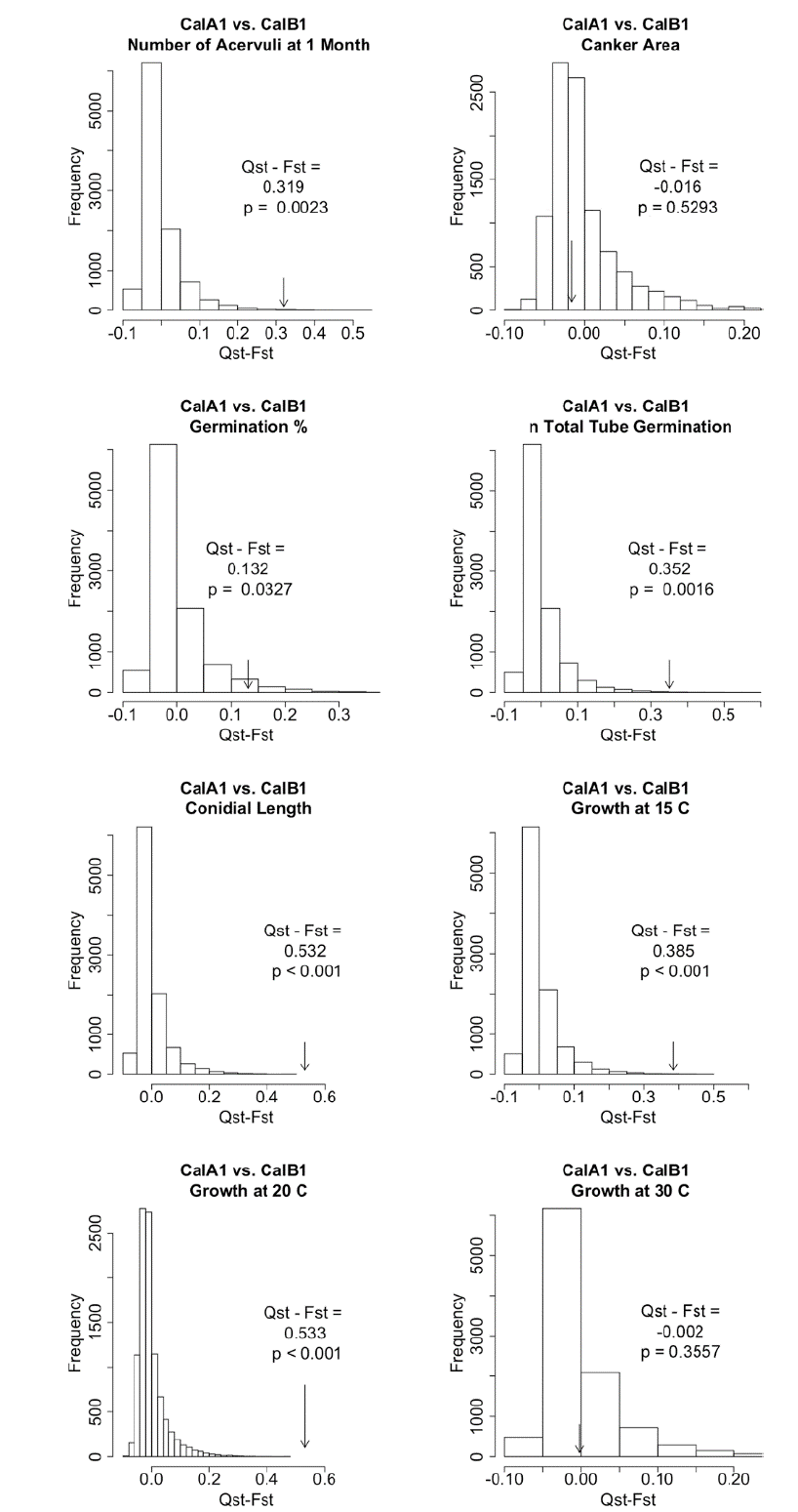
Ecological Archives C006-043-A3
Matteo Garbelotto, Gianni Della Roca, Todd Osmundson, Vincenzo di Lonardo, and Roberto Danti. 2015. An increase in transmission-related traits and in phenotypic plasticity is documented during a fungal invasion. Ecosphere 6:180. http://dx.doi.org/10.1890/es14-00426.1
Appendix C. Three figures with observed QST – FST values plotted against simulated null distributions for expected values under selective neutrality, comparisons correspond to tests 1–3 as shown in Fig. 1 in text.
Fig. C1. Observed QST – FST values plotted against simulated null distributions for expected values under selective neutrality (i.e., trait divergence not exceeding expectations of divergence due to genetic drift alone) for the comparison between populations designated by b-tubulin haplotypes found within California, the presumed host range of S. cardinale.
Fig. C2. Observed QST – FST values plotted against simulated null distributions for expected values under selective neutrality (i.e., trait divergence not exceeding expectations of divergence due to genetic drift alone) for the comparison between California population A1 (the presumed source of the California epidemic) and the initial Mediterranean invasive population A1.
Fig. C3. Observed QST – FST values plotted against simulated null distributions for expected values under selective neutrality (i.e., trait divergence not exceeding expectations of divergence due to genetic drift alone) for the comparison between Mediterranean population A1 and the secondarily derived Mediterranean population A2.